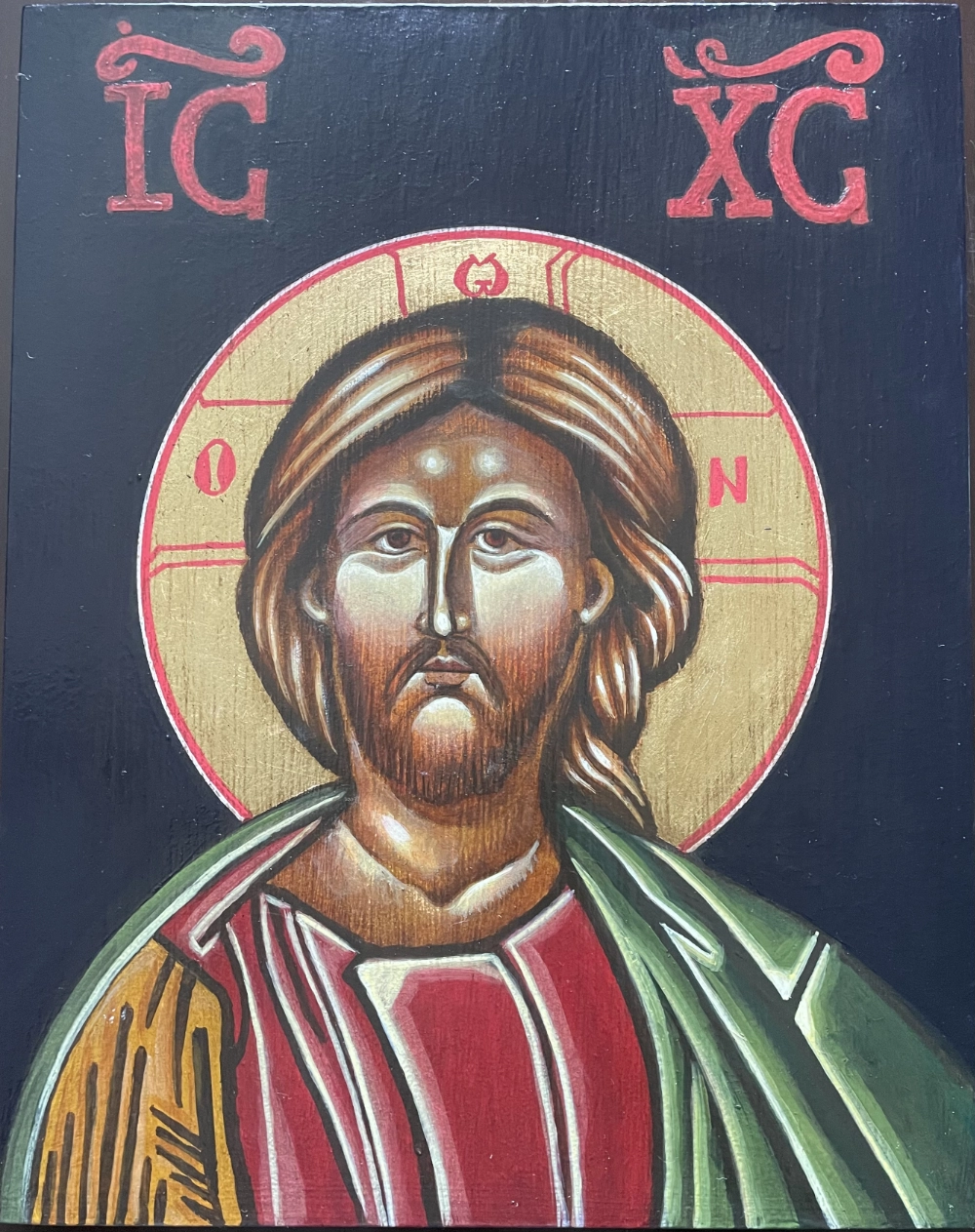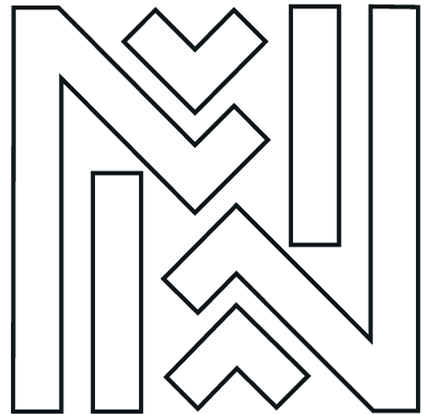An icon is an image of a holy person or event created by an iconographer who follows the strict standards Catholic Orthodox Christianity. Icons range in size from the very small (for home use) to very large (for cathedrals). It is not worshiped, but rather venerated and used in prayer. Traditionally unsigned, icons are considered a window or portal into a divine realm.
Iconography is a living tradition, and some icons today are still painted using traditional, centuries-old techniques and styles. An icon is a complex set of interwoven symbols that have evolved over centuries to form a refined and sophisticated visual language. When reading an icon, colors, clothing, hairstyles, gestures, and objects the subject holds all offer insight into what the iconographer was trying to convey.
It is traditionally the custom to say that one writes and icon rather than paints it. This because of the deep ancient theology that is embedded in the creation of the sacred image.
An ancient tradition also holds that St. Luke the Evangelist and author of both the Gospel of Luke and The Acts of the Apostles, was the first Christian iconographer. It is said that in his interview sessions with the Blessed Mother he also created the first icons of her with an imagined Christ Child based on her testimonies. Luke paints the most vivid picture of the first Christian St. Mary in his written contributions to the canon of the New Testament.
Look up the icons that exist to this day that are attributed to St. Luke.

Support/Board
Most icons are created on wooden boards sourced from local trees, covered with a fabric, typically canvas and treated with gesso.
Paint/Colors
Paints vary by culture and period. The most common is egg tempera, a mix of egg yolk and natural pigments, with colors applied from dark to light. Colors have symbolic meanings.
I typically (and many contemporary iconographers) use high quality oil paints on a prepared flawless wooden board treated with gesso. Other surfaces such as treated ceramic and treated canvas are used too.
Halo
The halo denotes holiness, indicating that the figure is in paradise. It was adopted in Christian art in the third century and has different origins by culture. A disk representing the sun accompanied the Egyptian deity Ra, for example.
If the halo of Christ overlaps with the halo of another figure such as His Holy Mother, the halo of Jesus Christ is always depicted on top and “closest” to the viewer.
Christ’s Halo
Christ’s halo often incorporates a cross, with the Greek inscription Ho On, meaning “The
One Who Is,” or “I am that I am.”
Gilding/Assist
Gold leaf in backgrounds, halos, and clothing represents divine light and the splendor of heaven. Fine cross-hatching of gold, known as “the assist,” is applied after the paint.
Inscription
The inscription identifies the icon and in some cases individual figures, usually written in the language of the iconographer and those who will use the icon. Inscriptions for Christ and His Holy Mother are in Greek.
“IX XC” are the first and last letters in the Greek words for Jesus and Christ, respectively.
The letters “MP OV” or “MP OY” literally translated from the Greek meaning Mother of God or the God Bearer or the One Who Carried God. The Most Holy Theotokos.
Symbolism
Mary is depicted almost always with a hand gesture to her son as if to communicate that the viewer should follow him.
The Christ Child is also often depicted with a high forehead indicating divine wisdom.
The Mother of God has three stars on her robes, symbolizing her virginity before, during, and after her pregnancy. Sometimes the Christ Child covers one of the stars in the pose of the icon.
The icons featuring Mother Mary enthroned in heaven are usually the most intricate to write and the most elaborate in terms of clothes draped and splendor.
In the Book of Revelation, chapter 12, the prophet John the Evangelist describes a vision of a woman clothed with the sun and adorned with stars—a woman soon to give birth to a son who is destined to rule all nations and who will be caught up to God and his throne.
In the Christian tradition, she is identified as Mary, the mother of Jesus.
My Two Images
In Christian iconography, Christ Pantocrator is a specific depiction of Christ. Pantocrator or Pantokrator, literally ‘ruler of all’, but usually translated as ‘almighty’ or ‘all-powerful’, is derived from one of many names of God in Judaism.
The Pantokrator is largely an Eastern Orthodox or Eastern Catholic theological conception and is less common under that name in Latin Catholicism. In the West, the equivalent image in art is known as Christ in Majesty, which developed a rather different iconography. Christ Pantocrator has come to suggest Christ as a benevolent, though
also stern and all-powerful, judge of humanity.
The Madonna and Child with a cheek to cheek pose presents the Holy Mother with an expression on her face called “luminous sadness”. Luminated from within by her great holiness and place in heaven but also saddened by the sorrows that pierced her earthly life and her desire for us all to be close to God.
Her closeness to the Christ Child is emphasized as well as her being the first face to kiss the human incarnation of the Almighty.
David Salako
June 2025

